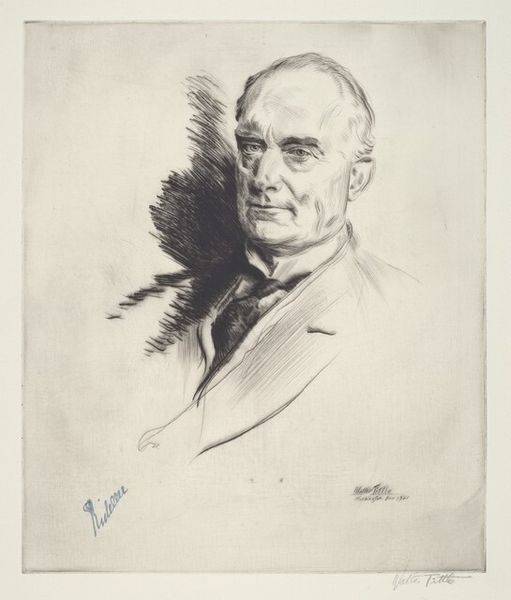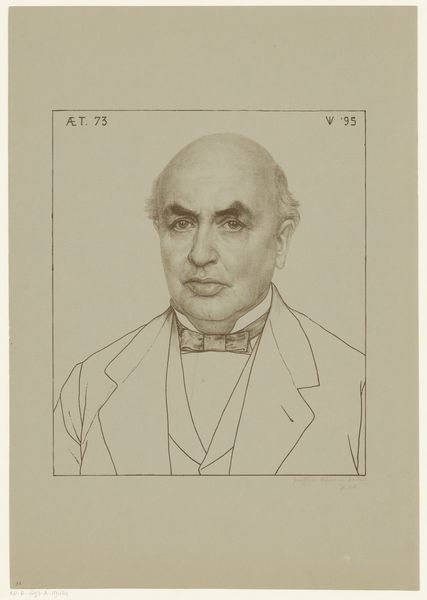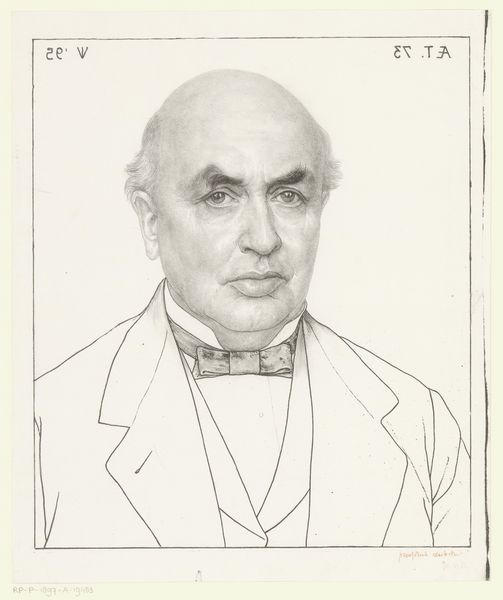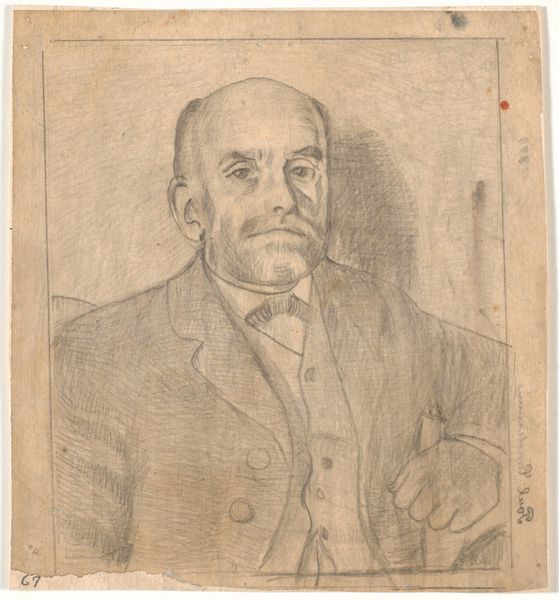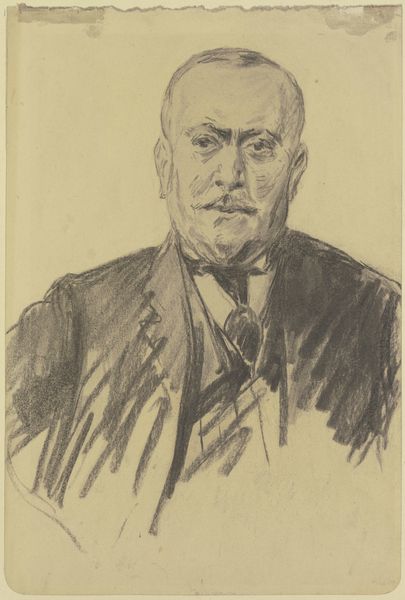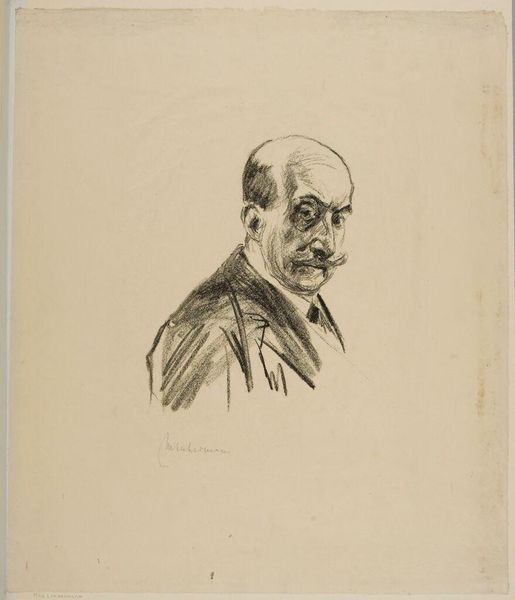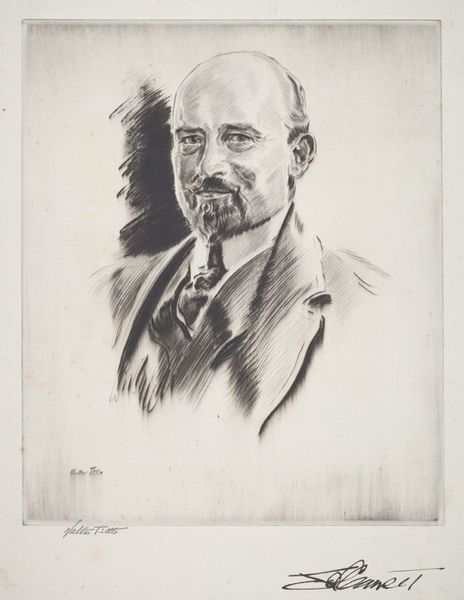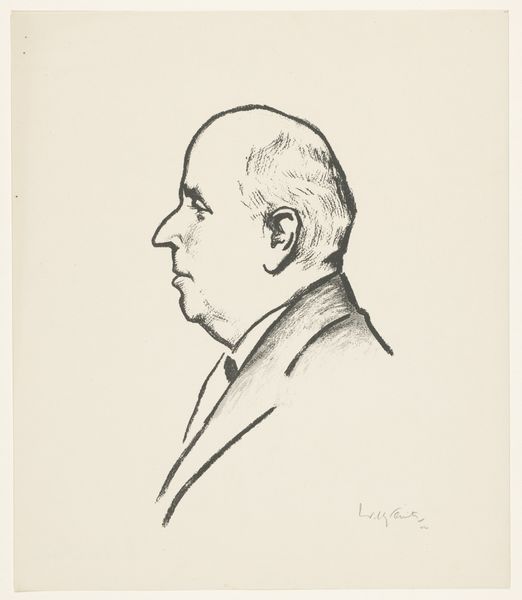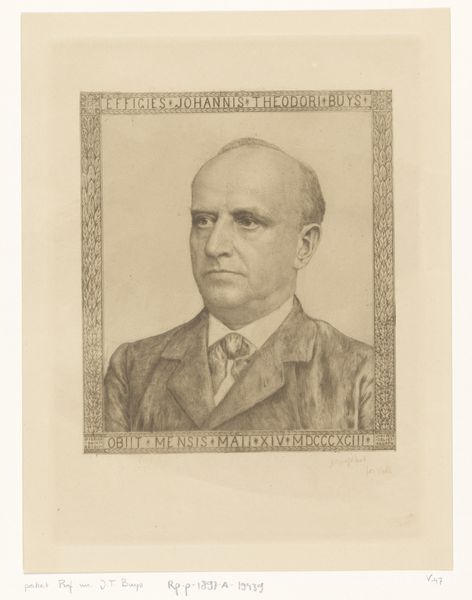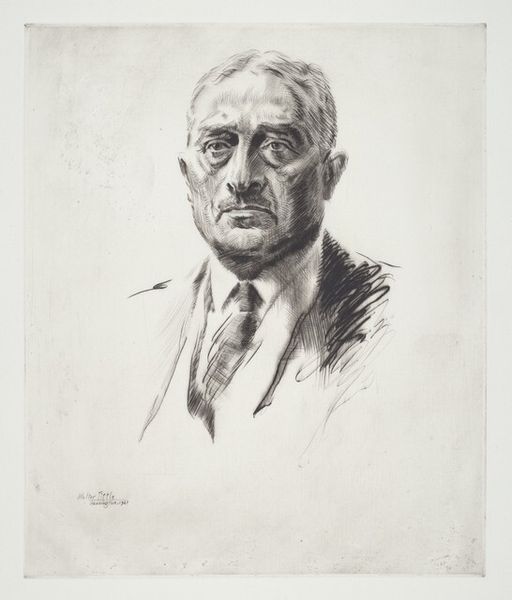
Sir Auckland Geddes, British Ambassador to the United States 1922
0:00
0:00
drawing, print, etching
#
portrait
#
pencil drawn
#
drawing
# print
#
etching
#
caricature
#
pencil drawing
#
portrait drawing
#
realism
Dimensions: plate: 30.48 × 25.4 cm (12 × 10 in.)
Copyright: National Gallery of Art: CC0 1.0
Editor: So, here we have Walter Tittle's "Sir Auckland Geddes, British Ambassador to the United States," from 1922, an etching print. It strikes me as both formal and subtly critical. What catches your eye in this portrait? Curator: Immediately, I see the artist's hand in every stroke. The lines, etched with such deliberateness, become a record of labor. Consider the sheer number of individual marks made to construct the image. Doesn't that process, the time invested, influence our perception of Geddes himself? Editor: Absolutely. It makes me think about the context in which this etching was made. Was printmaking a deliberate choice by Tittle, to make art more accessible to a wider audience perhaps? Curator: Precisely! Think about the economics of art production then. An etching allows for multiple originals, diverging from the unique, often exclusive nature of painting. It democratizes access, bringing the ambassador's image, and perhaps the artist’s commentary on him, to a broader public. Who would consume such an image, and why? Editor: That’s fascinating. So, you’re saying the print isn't just a representation, but also an object with a social life, intertwined with production and consumption? It's also about questioning the artistic hierarchy and assumptions. Curator: Exactly. Etching, often seen as a "lesser" art than painting, is employed here to depict a powerful figure. That tension challenges traditional boundaries of high art and craft. Does the method diminish the subject or subtly satirize his status through its mode of reproduction? Editor: I see it! By considering the means of production, we can unpack so many more layers in this seemingly simple portrait. Thanks so much! Curator: And I'm reminded how even a traditional form can become a space for questioning social hierarchies through material choices and modes of dissemination.
Comments
No comments
Be the first to comment and join the conversation on the ultimate creative platform.
